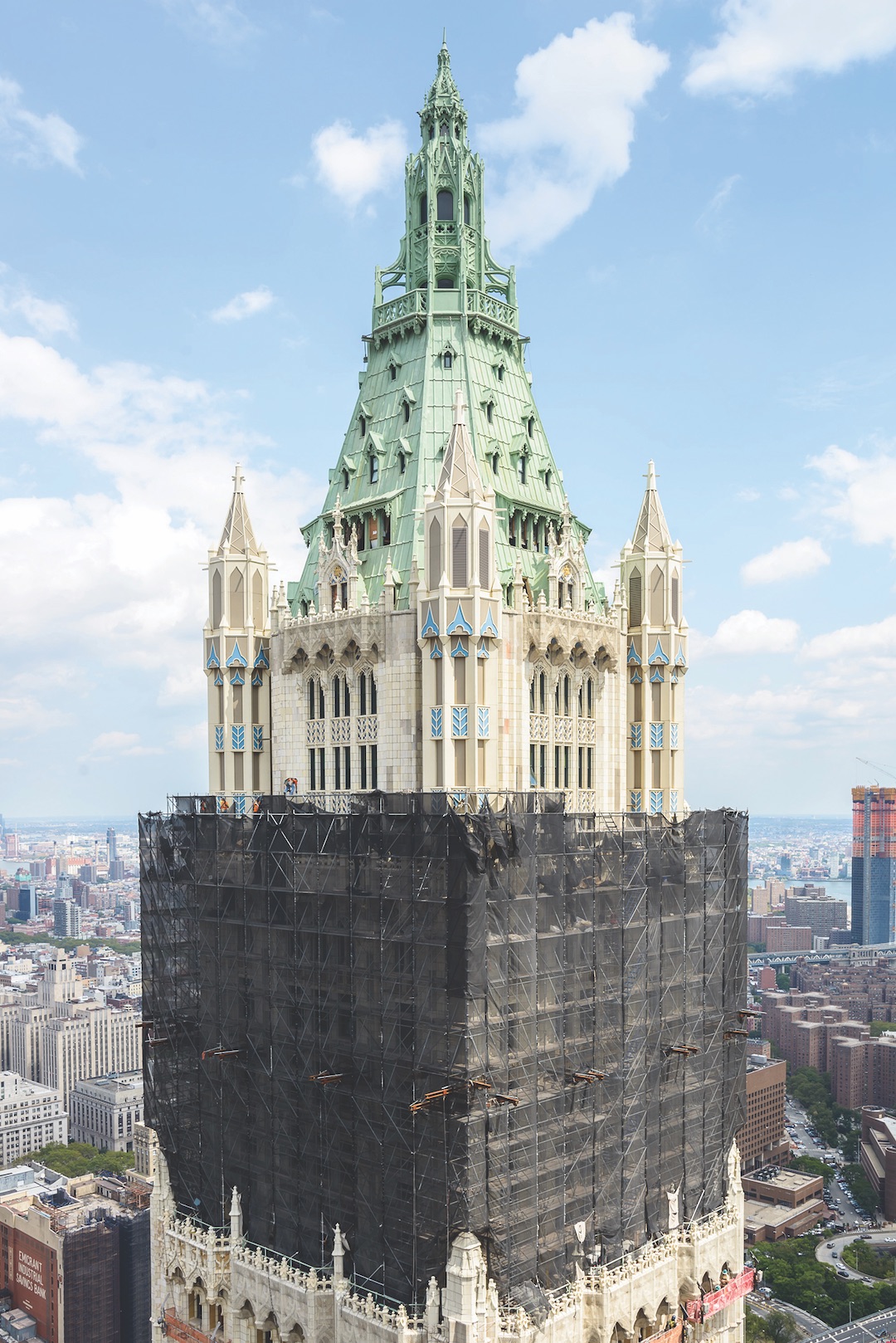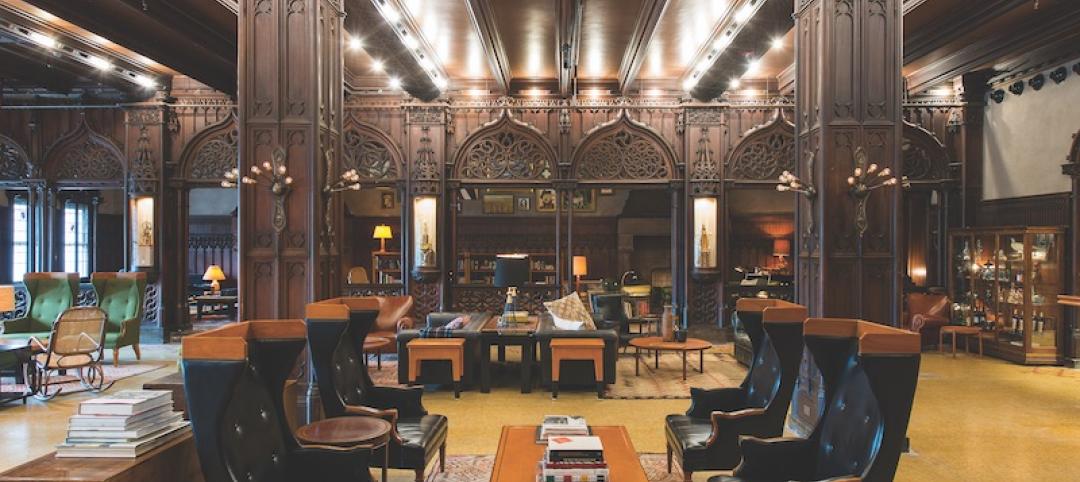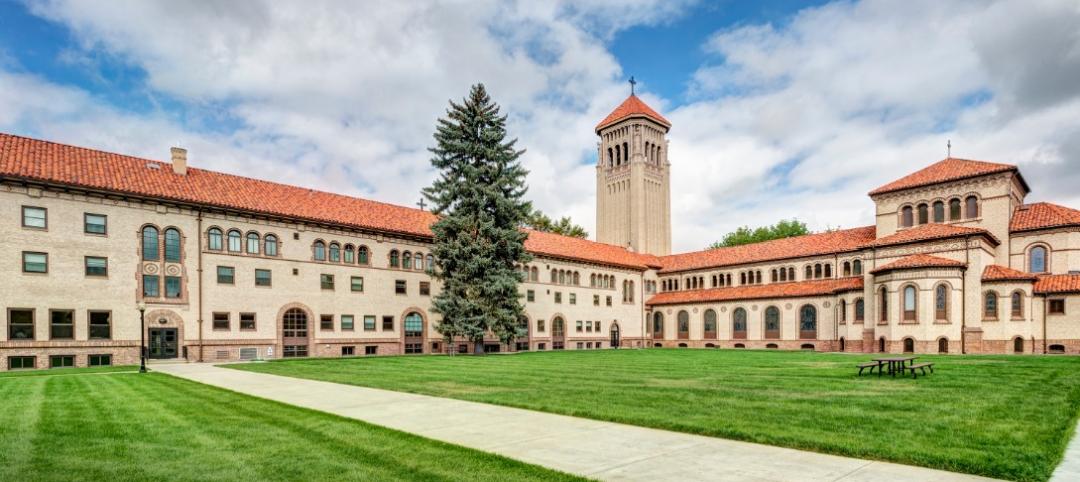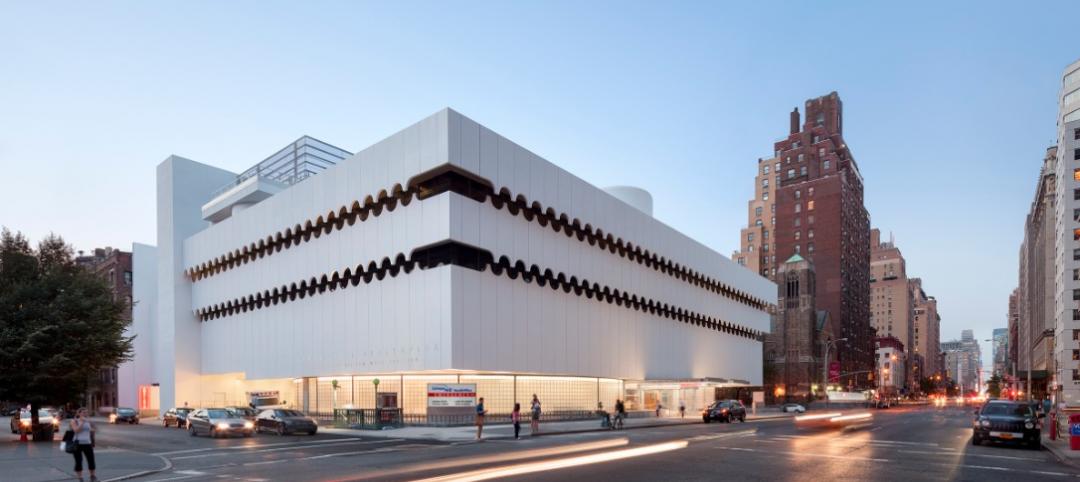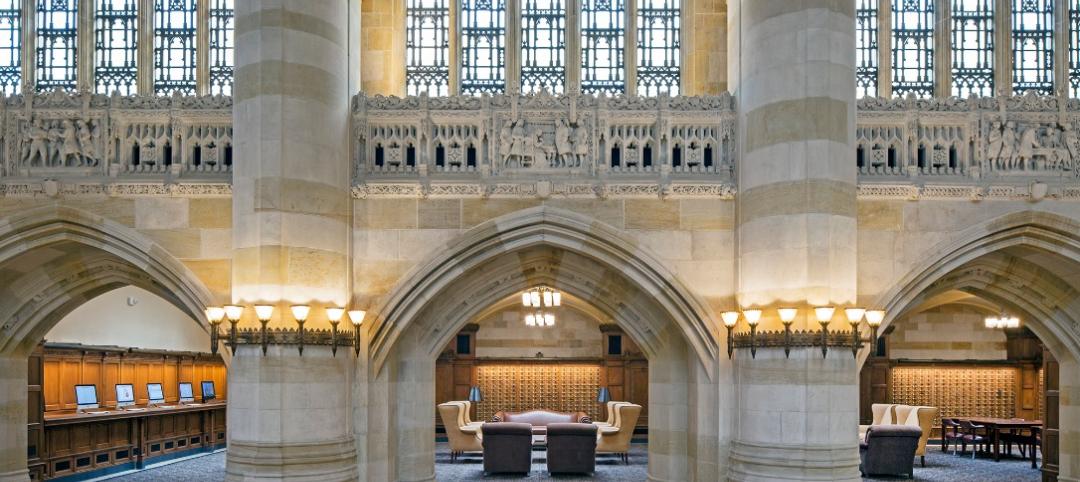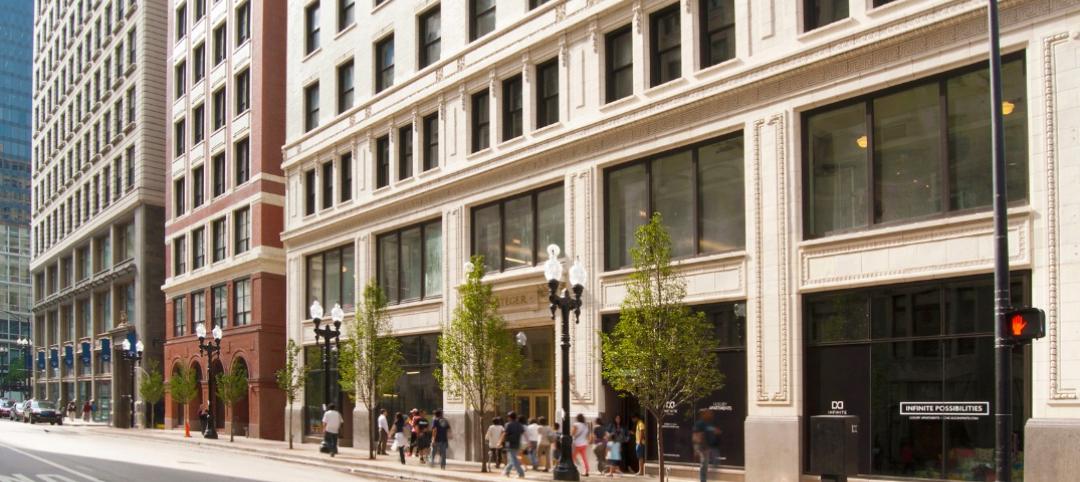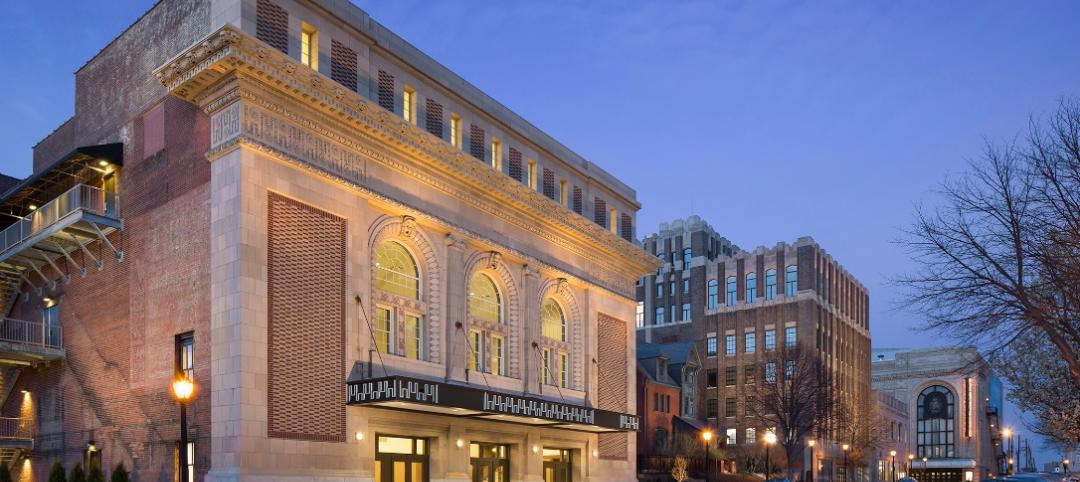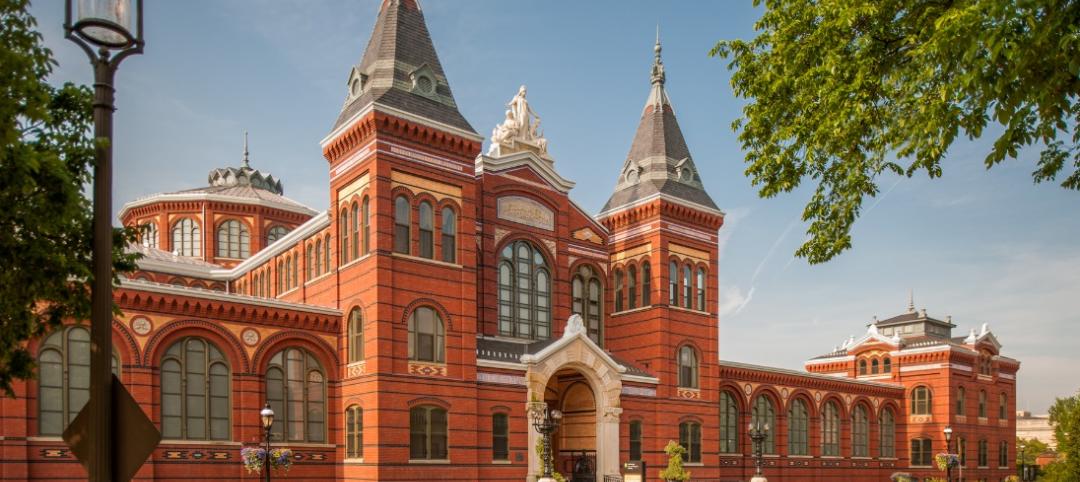Upon its completion, in 1913, the Woolworth Building was the tallest building in the world. Designed by Cass Gilbert (1859-1934), the 62-story, 792-foot Neo-Gothic skyscraper at 233 Broadway, New York, held that honor until 1930.
Now, more than a century later, it is being cited for the extraordinary effort by construction manager CNY and its project team in converting its upper tower into 31 luxury residences and one enormous penthouse, a five-story “townhome in the sky.”
The CNY team restored the landmark terra cotta façade, including turrets, decorative features, and metalwork; replaced and upgraded the MEP infrastructure; constructed a new separate entrance, lobby, and two new private elevators to serve the new residences on floors 29 to 50; and added a host of modern amenities: wine storage, a yoga studio, swimming pool, Jacuzzi, sauna, secure bicycle storage, a fitness center, and a lounge-gaming center with a pantry.
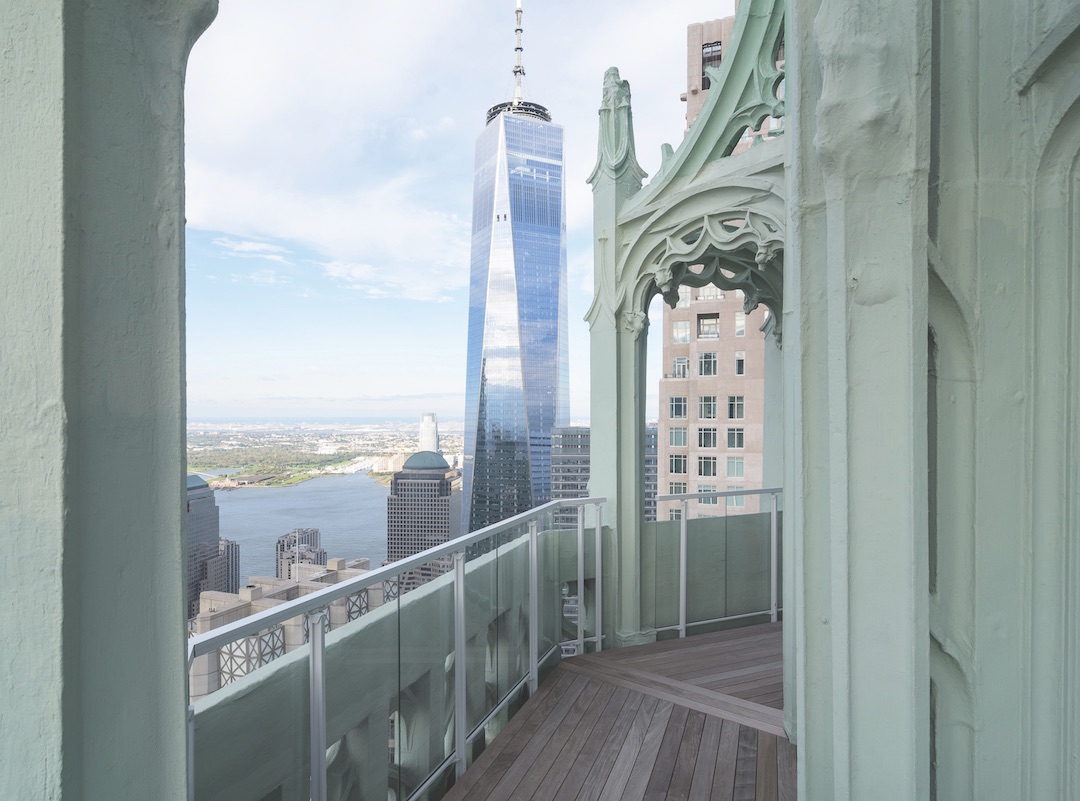 A two-story spiral stair leads to a wraparound observatory deck.
A two-story spiral stair leads to a wraparound observatory deck.
All this work had to be done in three around-the-clock shifts without the use of a crane or hoist tower on the outside of the building. Everything had to be hoisted up through existing shaftways within the guts of the building, even as the lower 28 floors were occupied with commercial tenants.
The only available access to the upper floors was through two decommissioned side-by-side elevators in which a temporary hoist cab that measured a mere 4½x9x9 feet was installed.
Oversized equipment like fans, cooling tower components, and pumps were purchased as knockdowns, enabling them to be fabricated, disassembled into smaller pieces, hoisted up, and reassembled in place. Steel section beams were cut into six-foot sections, hoisted to the 50th floor, winched up four more stories to the penthouse using a chain fall and pulleys, and reassembled and welded.
This amazing feat of structural and mechanical engineering and construction was achieved by removing four elevators, truncating three more, and gutting the core to construct two new large-core elevator shafts and stairwells—an operation that took two years to complete.
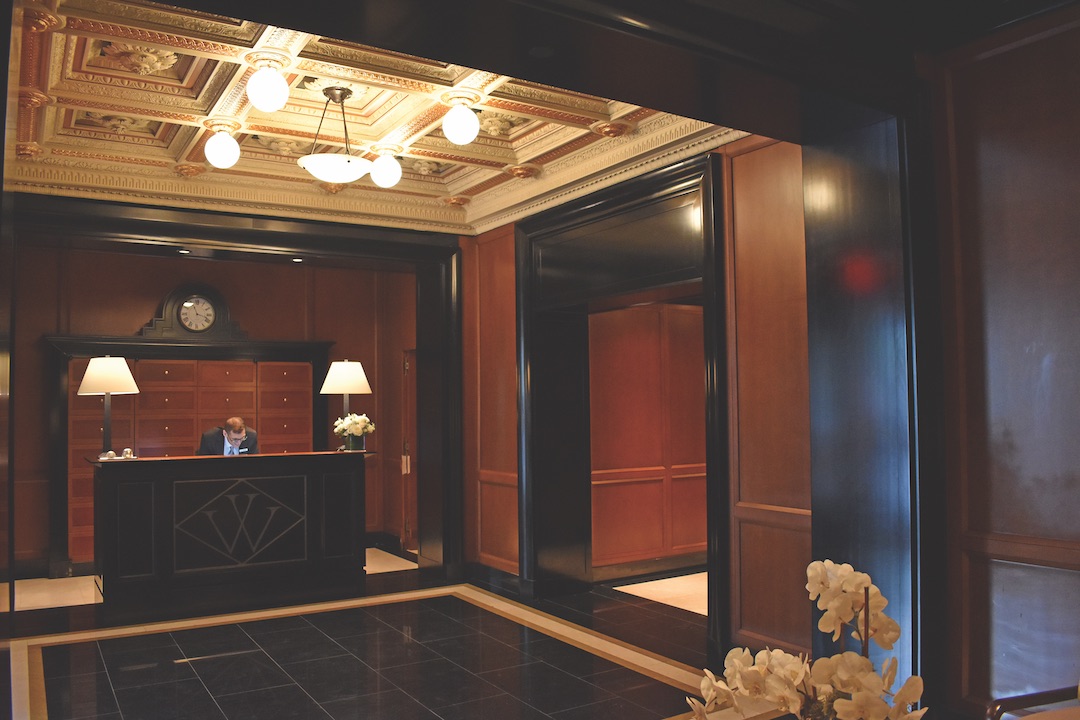
Construction of the five-story penthouse, known as the Pinnacle, required major demolition and gut renovation. The space originally housed the building’s MEP/FP systems and domestic water tanks. To replace these outdated systems, the project team had to field design and install a new 15,000-gallon water tank beneath the roof, a new fire pump 10 stories down, and a 3,500-gallon tank 20 stories down. Only then could the old tanks and equipment be removed. A new circular stairwell was constructed through the center of the donut-shaped tank.
As befits a National Historic Landmark (1966) and New York City Landmark (1983), no two floors and no two rooms in the Woolworth were exactly the same. The distinct floor-to-floor heights, differing beam depths at the ceilings, and drifting historical columns at the core complicated the stacking of the units. The diminishing size of the floor plates in the tower, coupled with the unique requirements of extremely discriminating buyers, added to the complexity of the design.
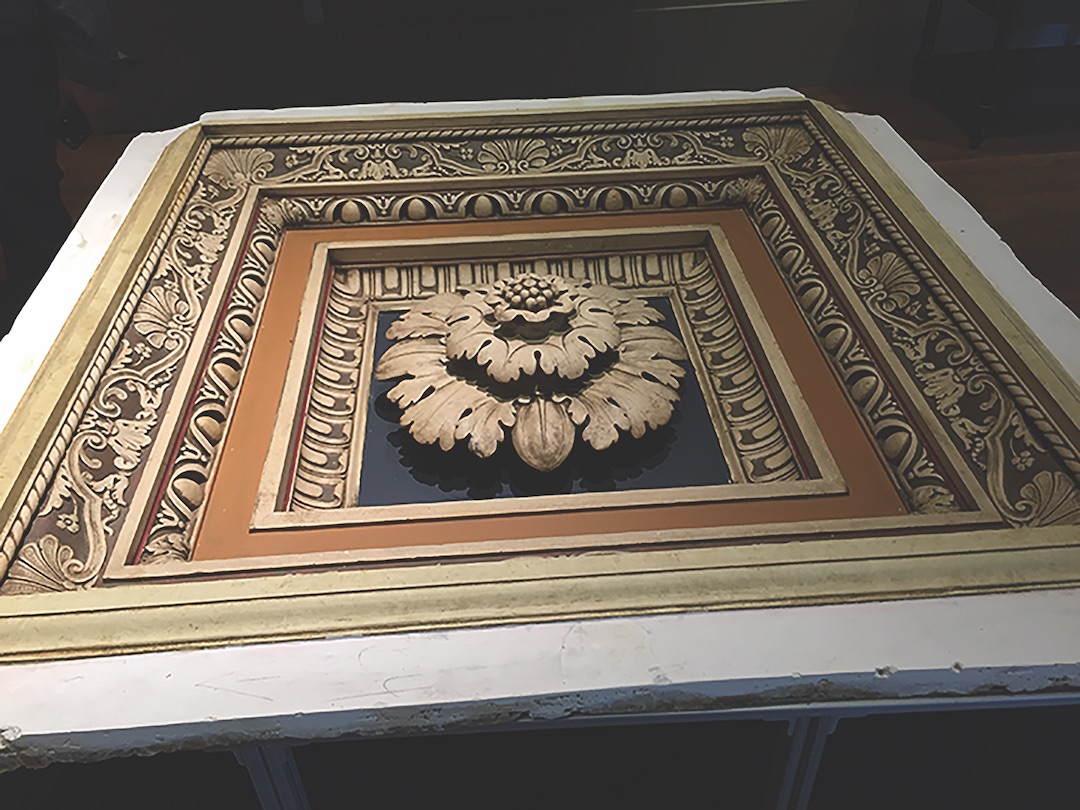 Restored hundred-pound plaster ceiling panels were installed in the lobby.
Restored hundred-pound plaster ceiling panels were installed in the lobby.
Sculptural arches, gargoyles, and terra cotta rosebuds were restored as a critical component of the customized framing of every window. About 7,500 tons of cream terra cotta with blue and yellow glazed accents were meticulously preserved or recreated, using over 30 different molds to match the landmark color aesthetic, at a cost of $23 million.
To revive the original 55x15-foot basement lap pool, CNY had to remove, inventory, and reposition 34 solid marble coping stones weighing 800 lbs each.
As a finishing touch, CNY relocated the original coffered ceiling in F.W. Woolworth’s office on the 40th floor—400 sf of 3x3-foot, 100-pound blue, white, and gilded/bronzed plaster panels—to a dedicated residential entrance lobby.
PLATINUM AWARD WINNER
BUILDING TEAM CNY (submitting firm, CM) BlackRock (owner) The Office of Thierry W Despont Ltd. (architect, interior architect) SLCE Architects LLP (architect of record) Gilsanz Murray Steficek LLP (SE) AKF Engineers LLP (MEP) DETAILS 150,211 sf Total cost Confidential at owner’s request Construction time January 2016 to December 2018 Delivery method CM
Related Stories
Reconstruction Awards | Nov 11, 2016
Exclusive Chicago club re-emerges as a boutique hotel
Built in 1893 for the World’s Columbian Exposition, the CAA was an exclusive social club founded by leading figures in American sports and commerce.
Reconstruction Awards | Dec 1, 2015
Massive Chicago parking garage gets overdue waterproofing
Millennium Lakeside Garage, the largest underground parking facility in the U.S., hadn’t been waterproofed since the 1970s. The massive project took nearly 2½ years and 33,554 man-hours.
Reconstruction Awards | Nov 30, 2015
Washington Monument restored after 2011 East Coast earthquake
This restoration and repair project, which was completed under budget and eight days early (despite several setbacks), involved re-pointing 2.5 miles of mortar joints, repairing 1,200 linear feet of cracks, and installing 150 sf of Dutchman repairs. Construction took place from November 2011 to May 2014.
Reconstruction Awards | Nov 30, 2015
Denver's 107-year-old seminary campus modernized
The scope of the project included the seminary dorms, library, and chapel, all of which posed their own set of obstacles.
Reconstruction Awards | Nov 24, 2015
Center of I.M. Pei-designed plaza part of Washington redevelopment
The L’Enfant Plaza, a three-story below-grade mall, was renovated to include a new glass atrium pavilion and a 40-foot-long, interactive LED.
Reconstruction Awards | Nov 24, 2015
Manhattan's first freestanding emergency department a result of adaptive reuse
The Lenox Hill Healthplex, a restoration of the Curran O’Toole Building, has glass-block walls and a carefully preserved exterior.
Reconstruction Awards | Nov 19, 2015
Nave restored at Yale’s Sterling Memorial Library
Turner Construction and Helpern Architects revived the 150-foot-long nave, which was embellished with stained glass windows by G. Owen Bonawit, stone carvings by René P. Chambellan, and decorative ironwork by Samuel Yellin.
Reconstruction Awards | Nov 19, 2015
Infinite Chicago redevelopment bridges past to present
The renovation of three historic downtown buildings—the Gibbons and Steger Buildings and Pickwick Stables—includes a multi-level concrete walkway connection.
Reconstruction Awards | Nov 18, 2015
Sun Theater serves the youth of St. Louis
Lawrence Group and property owner TLG Beaux Arts raised $11 million to restore the 26,000-sf theater into a modern performance venue.
Reconstruction Awards | Nov 17, 2015
Smithsonian Institution’s Arts and Industries Building again an exposition and museum space
After removing decades’ worth of unfortunate additions to expose 17 historic interior spaces for the National Historic Landmark, the Building Team zoned in on the client’s key concern.


